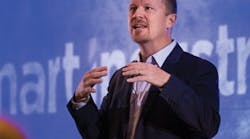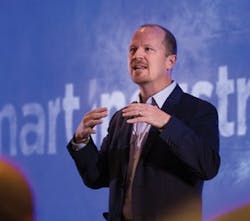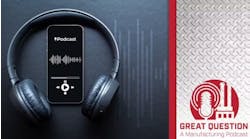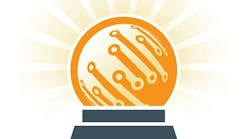Customer focus driving Caterpillar’s digital metamorphosis
By Mike Bacidore
Why go digital? What is the appeal of this Industrial Internet of Things (IIoT), and why would a manufacturer change its very business model to leverage it?
Some do it to track assets. Some see the financial rewards of remote monitoring and predictive analytics. Others want the energy-efficiency benefits or improvements in product quality. Still others crave production efficiency. And then there are those who do it because everyone else is.
“There’s so much value we can create by leveraging data from 560,000 connected assets in the field.” Caterpillar’s Tom Bucklar discussed how the company leverages data streaming from its connected machines to better understand and solve its customers’ problems.
But Caterpillar embarked on its digital transformation journey for perhaps the best reason of all—for its customers. “Our customer focus has driven us to the digital strategy we have,” explained Tom Bucklar, director of innovation and digital at Caterpillar, in his keynote presentation at Smart Industry 2017. “We’ve been on this journey since the mid-1990s, when we started connecting our machines with telematics. We realized how powerful that was.”
“We certainly have our version of the Industrial Internet of Things—in our case, really big things,” he added. “Almost every machine that comes out of our factory has data streaming from it. We are retrofitting old machines, too. There’s so much value we can create by leveraging data from 560,000 connected assets in the field.”
Caterpillar’s digital strategy is based entirely on what helps its customers to be more profitable and more successful. A key outcome of that strategy is the company’s Cat Connect platform, an intelligent suite of hardware, software and dealer services. “Technology is only good for so much,” explained Bucklar. “How you apply it on the job site makes the difference.” And with 3,000 locations around the world, there are lots of application opportunities.
Caterpillar sees digital transformation as a continuation of the custom-focused journey it started more than 100 years ago. Then, it was helping customers to plow fields and move dirt. But a lot has changed over the decades.
Information from the field
Instead of trying to apply existing products as solutions to problems, Caterpillar leverages the IIoT to identify its customers’ biggest problems and address them, Bucklar said. The company’s digital strategy helps Caterpillar to maintain market leadership by approaching product development from a unique, more informed perspective.
“We’re starting to take more consumer technology and drive it into our business, rather than depending on R&D,” explained Bucklar. “You don’t do this stuff alone any more. We used to be like a typewriter manufacturer. Today, we’re more of a PC manufacturer. We work with a plethora of other companies to provide solutions for our customers.”
In the construction industry, one of Caterpillar’s North American customers is a contractor with more than 10,000 pieces of equipment—almost one-third being Caterpillar machines. “The contractor wanted to connect all of this equipment with one screen and manage utilization,” explained Bucklar. “We used the hardware we had, but we are also using the APIs from other manufacturers and leveraged our telematics.” Within a year, the contractor had increased its utilization by 15%. Across a fleet of that size, those are significant gains.
“When you get into our mining or oil & gas business, there’s even more streaming data,” Bucklar added. “In those industries we’ve started to work with customers using predictive analytics.” Unplanned downtime for 900 hours on a piece of equipment could cost $700,000, compared with planned downtime of 24 hours costing only $12,000, he said. The savings are significant.
“With the world’s largest fleet of autonomous mining equipment we’ve moved 500 million tons [of earth] with zero injuries,” Bucklar added. “We’re doing analytics and trying to figure out on-machine what’s going on. We’re trying to get smarter.”
Smarter machines are better for customers. And at Caterpillar that’s still the best reason to go digital.




